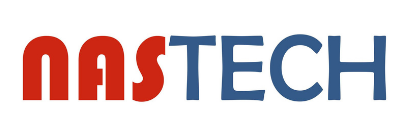What Is A Micro Battery Inverter?- NingBo Deye Inverter Technology Co.,Ltd
If you are in the market for a solar energy or alternative energy equipment purchase, you might want to look into a multi-voltaic (solar or non-solar) inverter. There are two main types of multi-voltaic inverters, the first type is a true single phase inverter. The second type is a multi-step or three phase inverter. The purpose of the above two types of multi-voltaic inverters is basically the same, but the way they accomplish this is quite different. For example, a true single phase inverter converts direct current (DC) power to alternating current (AC).

Single Phase String Inverter: This type of multi-voltaic inverter works on one or two phase AC power. This power can be routed either to the solar panels or to the batteries depending on how the system is setup. The biggest benefit of single phase string inverter is that it is more cost efficient than the other two types of solar systems. Also, this type of inverter is typically smaller and is not as large as the other types of multi-voltaic solar inverters.
The primary downside of using a single phase string inverter is that it is normally not designed for heavy duty use and does not have the maximum output that the other systems can provide. However, the pros far outweigh the cons when it comes to this type of system. The primary pros include; ease of installation, lower startup costs, and ease of operation.
Low startup costs: Most of these systems cost less than three thousand dollars. This is considered a cost-effective solar installation. Since the units are easy to install, they do not require professional help which would incur additional costs. The downside to these units is that they only convert about thirty percent of DC power to AC power. So, if you are going to use them for your home, it is important that you double-check with your electrician to see if you can actually get a system with such capabilities.
Easy installation: Compared to the other two solar panel installations mentioned above, these types of inverters are very simple to install. They can also easily connect to the existing wiring system without any professional assistance. The biggest disadvantage of these types of inverters is that they have limited the amount of wattage that can be converted. Also, due to their small size, the cost-effective inverters become slightly more expensive.
Easy to control: This type of inverter can automatically adjust the power supplied to your battery system, so that it will be able to supply the most efficient AC electricity in order to keep your appliances working. As soon as the batteries are fully charged, the DC electricity supplied by the inverter will be turned into AC electricity. To make sure that you are receiving the most efficient AC electricity, you may want to turn off the main power to the house before turning on the DC powered inverter. The inverter will automatically shut down once the battery systems are fully charged.
Easy maintenance: Compared to the other two types of solar panel installations, a single line inverter requires minimal cleaning and little to no maintenance. You typically just need to wipe it down with a damp cloth or sponge once in every few months. The blades of your inverter are typically made out of anodized aluminum which can easily withstand wear and tear. Since you do not have to regularly clean these units, they are typically more cost-effective compared to the other types of inverters. Also, since you do not have to regularly service these units, you do not need to pay as much in labor either.
String Inverter System Monitoring Microinverters are typically used for very simple applications where a single device requires monitoring. The benefit to string inverter system monitoring is that you do not need to connect each and every device that needs to be monitored to the microinverter, thus decreasing the amount of power that must be sent to devices. If you utilize a multiple string inverter system, you can monitor each individual device individually.

